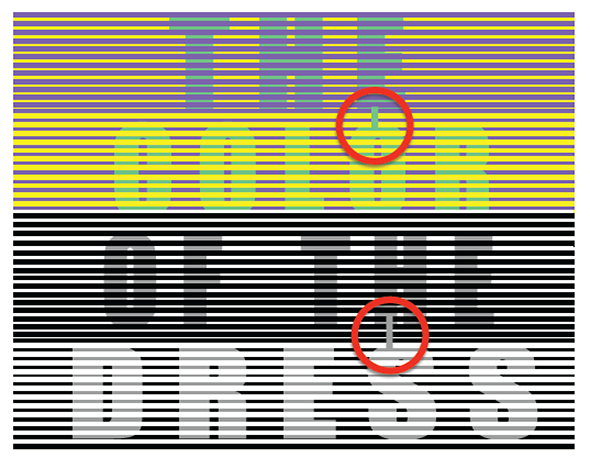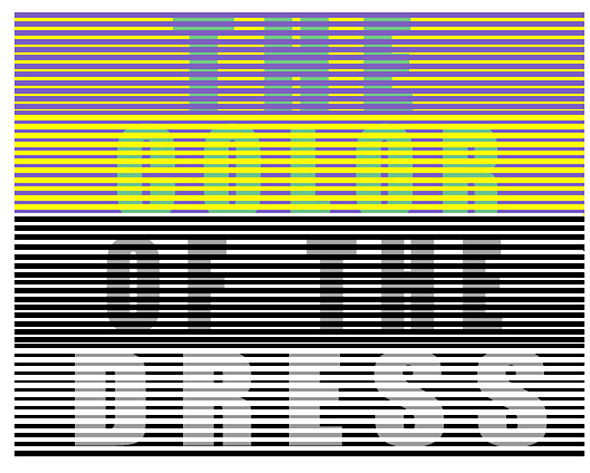Arguing about the color of “the dress” might seem like a frivolous waste of time. But discussing the underlying issues is not.
At this point we are well past peak dress. Nonstop coverage on social media seems to have resolved most of the pertinent questions, including the color: The actual dress is black and blue. Scientists from many disciplines have weighed in on what is going on in general and likely in this case specifically.
But before we move on, there are some lingering issues still to be tied up.
First of all, this was not a trivial debate. The question is how serious people could spontaneously and sincerely perceive a picture radically differently from what it looks like in real life.

Image courtesy of Steven K. Shevell/University of Chicago
Such a stimulus is called an “ambiguous” stimulus. While many such stimuli are known in many different fields of vision, such as motion, to my knowledge this is the first strong ambiguous stimulus in the field of color vision. And it was brought to the attention of science by social media, no less. This is probably also a first. To say nothing of the fact that it has been a long time since perceptual neuroscience has been this culturally relevant, if ever.
This was a golden (or blackish?) opportunity to learn about the phenomenon of color constancy—basically the attempt by the brain to constantly color-correct a scene. This usually works so well that no one ever notices it. In this case, color constancy broke down, probably because the picture was taken on a cellphone with settings that were not conducive to rendering the image veridically. In the absence of other cues that could disambiguate the picture, we were left with an inherently ambiguous image.
Which brings us to the last thing that is worthy of tying up. Some people still think this debate is about “being right.” But that is beside the point. What is really going on is that the information available to the visual system is consistent with multiple equally valid interpretations, and the brain has to pick one, just as in the classical duck rabbit ambiguous drawing. At this point we simply do not know why someone picks one interpretation over the other and sees the picture of the dress in one set of colors whereas someone else sees the same picture in dramatically different colors. But this is not surprising. This stimulus only came to the attention of science a couple of days ago. The way science resolves this kind of thing—in this case the subjective perception of profoundly ambiguous color stimuli—is to collect data to explore hypotheses, not by armchair speculating. And there are no shortcuts.
You can help. Please take this short survey to share your observations about the color of the dress and help guide research into this mysterious phenomenon.
Read more of Slate’s very comprehensive coverage of The Dress.
